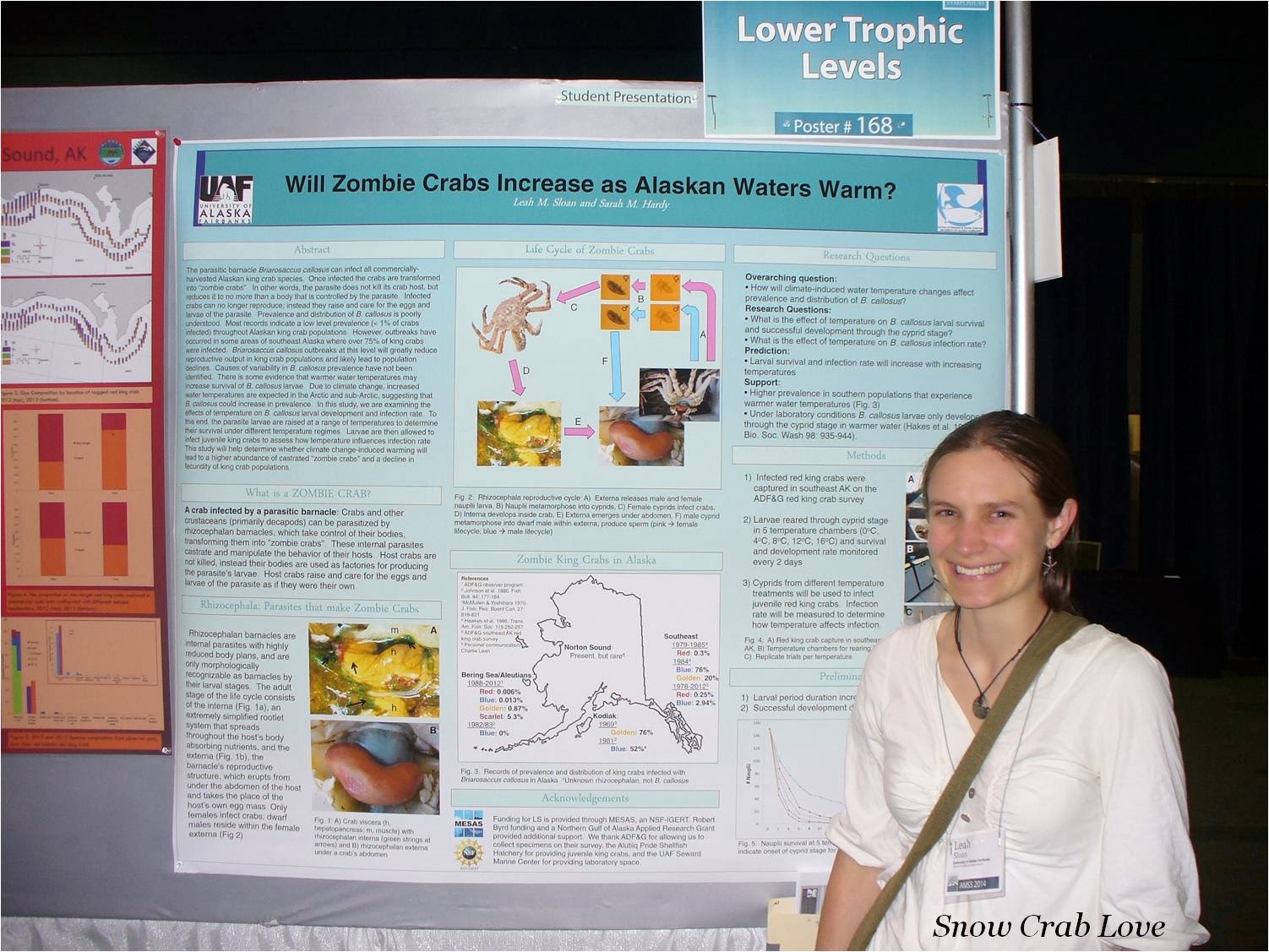It's Science Fair time up here in Juneau!!! That means data has been collected, numbers have been crunched, and posters are being put together for the big presentation this weekend! This will be my third year judging and I'm so excited to see all the projects the high school students have come up with this year!
Last year I was also a mentor (mentioned here) but sadly my student didn't end up presenting her results. It was sad in two ways: (1) she was pretty pumped about the project, but had double-booked the weekend because she was also super involved in a lot of school activities (go get 'em!), so it was too bad she didn't get to present her work. (2) This experiment involved live animals, so had I known she wouldn't complete the program, I wouldn't have mentored this type of project. I take working with animals very seriously and take it to heart if/when any of the animals in my care die.
this seems silly, but remember my snow crab quilt
with a crab to honor each of my study animals?
That being said, I still want to present the fun little project I had the opportunity to participate in since it hasn't been shared yet! Hermit crabs depend on gastropod shells to protect their soft, delicate abdomens. Because of this need for protection, shell strength is an important variable for them when choosing which shell to inhabit. Given the choice in normal situations, it's been observed that hermit crabs will choose intact shells over damaged ones, since the damaged ones would be easier to break into by their predators. We wondered how their shell choice might differ in differing situations: will they make the same choice under stress? How about if they think there are a bunch of potential shells around - will they be as choosy initially? Will they still worry about shell strength???
To test this question, we took hairy hermit crabs, Pagarus hirsutiusculus, that were being housed at the University of Alaska Southeast wet lab and offered them two shells: one intact, one with a tiny hole. When giving the crabs an opportunity to make this choice, we took advantage of their use of chemical cues and exposed them to different "smelling" water. We exposed some of the hermit crabs to water that smelled like a known predator, the Dungeness crab, to act as the stress treatment. We exposed others to water that smelled like dead snails to mimic a gastropod predation event, or a time when several snails are being eaten and therefore leaving their shells up for grabs. We finally had a control treatment where the hermit crabs made their choice in the same water that had been pumping through their holding tanks.
hello!
In order to encourage shell selection, we had to gently remove the hermits from their original shells (crazy easy to do without any harm to the crabs!). We saved their original shell so that they could move back into it when the trial was finished. We also measured their original shell's weight so that we could offer them test shells of similar size/weight (we didn't want to give a big crab a small shell!).
science! collecting naked crab weights!
We measured the time it took for them to approach a shell, the time it took for them to enter a shell, and their shell selection. We took note if they changed which shell they chose too, just in case any of them had buyer's remorse.
choices choices: the two shells offered are from the same species of snail,
but one is damaged goods and one seems shiny and new
(the small white thing in the leftmost part of the tank is a bit of gravel)
What did we find? For all treatments, the hermit crabs chose the intact shells over the damaged shells. This wasn't too shocking, but it was still interesting to see that, even under stress (Dungeness-scent) or at leisure (dead snail-scent), they still made the same basic decision.
more hermit crabs chose intact shells than damaged shells
and rarely changed their minds, although one crab switched from
an intact shell to damaged one in the predator treatment...
The time it took for the crabs to approach a shell and enter it were very similar. It seemed like some of the crabs would just wander around the tank for the most part and sense the shells by touch rather than sight. Once they touched a shell, they would hurry their little tushes into it! The time it took for them to find the shells was roughly the same across all treatments (ie "there was no significant difference in average time for first approach or shell entry across treatments (ANOVA, p > 0.05)").
get in there!!! (see his little rhizocephalan?)
The main thing: IT WAS FUN! Yes, it was several hours in the lab and, yes, I'm still sad that it wasn't presented at the fair, but it was fun being a mentor and doing this crabby side-project!


.JPG)
.JPG)
.JPG)

.JPG)














